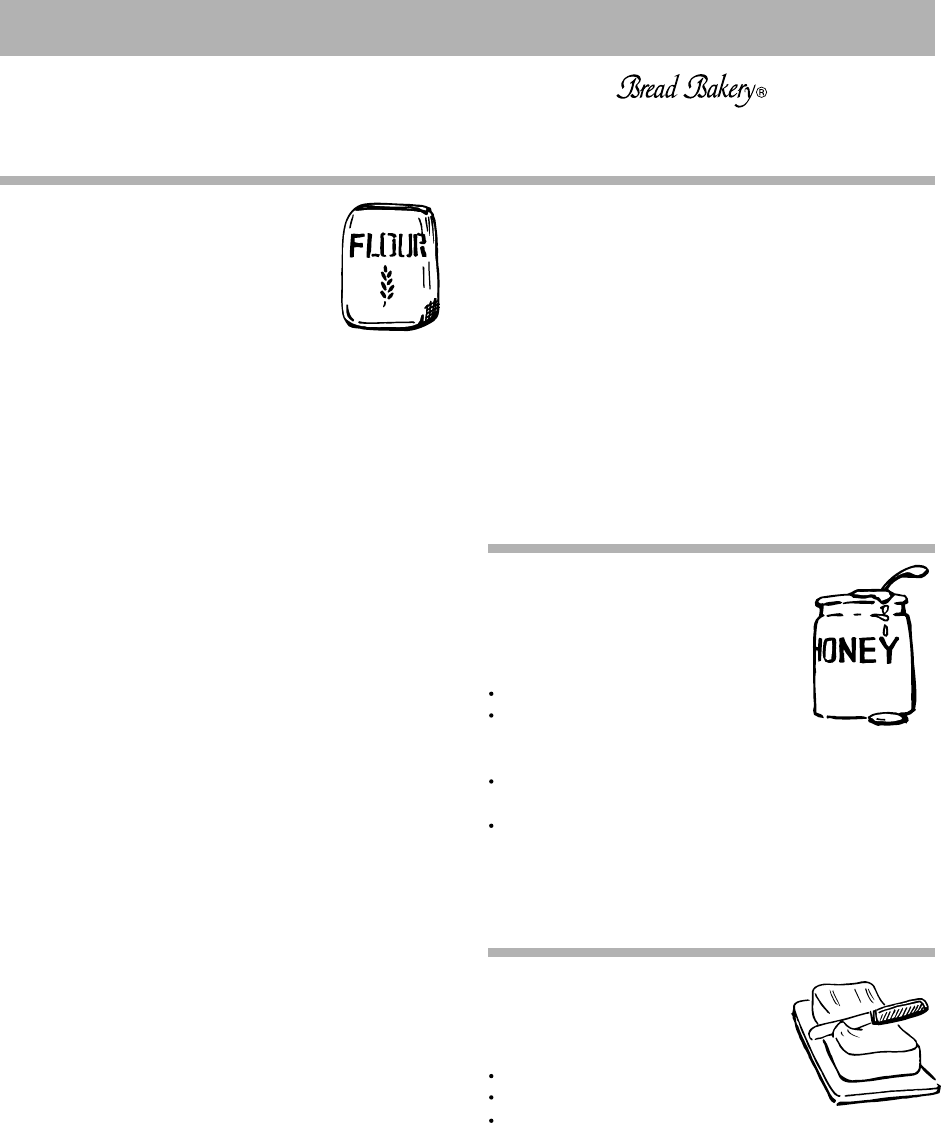
Since the bread program on your Automatic is
completely computerised, the success of your loaf depends on the quantity
and quality of the ingredients
Flour:
Wheat flour provides the bulk and
structure of bread. Flour is classified
into two types, strong flours which are
milled from hard wheat and weak
flours which are milled from soft
wheat. The difference in the two types
of wheat is the content of proteins that form gluten
( gluten is the important constituent of bread which
provides its structure and its stretchy, chewy texture.
Gas which is released during fermentation is trapped
within the elastic network of gluten, thus making the
dough rise. Gluten development mostly takes place
during dough kneading).
Strong flours contain a high content of protein
necessary for the development of gluten. Always use
strong flour - labelled as suitable for bread making
when using the recipes in this book.
Weak flour such as cake flour and pastry flour, are
less in protein content and are suitable for products
which have a light, crumbly texture and do not require
much gluten development.
All purpose flour is used for many purposes, as the
name suggests, in home baking. It is slightly weaker
than bread flour. In our recipes, it is blended with the
bread flour and not used alone.
Self rising flour is a white flour to which baking
powder and sometimes salt have been added.
Weak flours, all purpose flour and self-rising flour may
not be substituted for bread flour in the included recipes.
Whole wheat flour is made by grinding the entire
wheat kernel, including the bran and germ. 100%
whole wheat bread or breads containing a high
percentage of whole wheat flour will be lower in
height and heavier in texture than bread baked with
a high percentage of bread flour. This is because the
gluten strands are cut by the edges of bran flakes
and the germ, rich in minerals, inhibits fermentation.
Ingredients
Rye flour contains some proteins but these do not
form sufficient gluten. Therefore, bread baked with
rye flour will be dense and heavy. When a recipe in
this book calls for rye flour, do not use more than the
stated quantity, as it could overload the motor.
Other flour: Products milled from other grains are
occasionally used in bread. i.e. corn meal, rice, millet,
soy, oat, buckwheat and barley flours. These do not
contain protein that form sufficient gluten and
therefore they should not be substituted for bread
flour in the recipes. For gluten free bread making
see page 6. Do not add more than the stated amount
in the following recipes, otherwise a good result will
not be achieved.
Sugars:
Sugars or sweetening agents
have the following purposes in
bread making:
They add sweetness and flavour.
They add softness and fineness to
the texture.
They give crust colour.
They contribute to keeping
qualities by retaining moisture.
They provide food for yeast.
Besides granulated sugar or caster sugar, brown
sugar, honey and molasses can be substituted in the
recipes. Recipes including fruit generally require less
added sugar due to the high sugar content of the fruit.
Fats:
The major purpose of fats in bread
baking are:
They tenderize the bread.
They add flavour and richness.
They contribute to keeping qualities
by retaining moisture.
Any fat can be used, however, we
recommend butter for the best flavour
and texture.
17


















